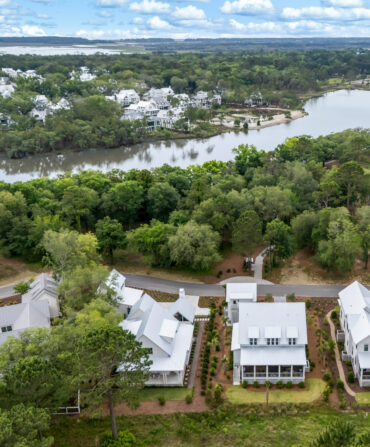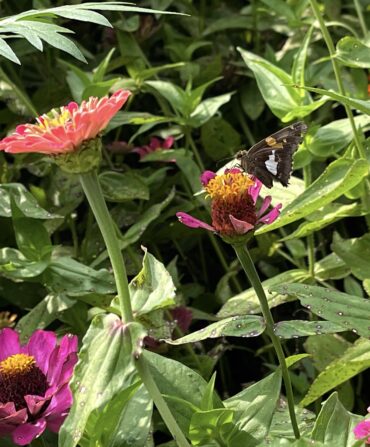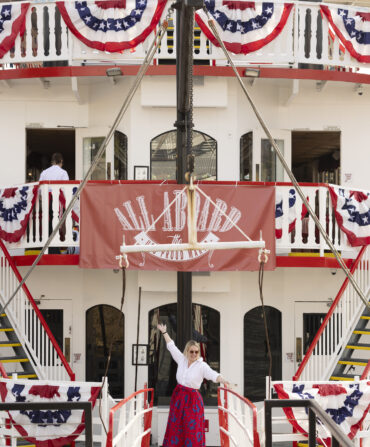Rita Hayes’s home on Sullivan’s Island, South Carolina, can lower a person’s blood pressure with each gentle slam of a screened porch door. Set back from the street on a deep lot, elevated among rustling palms and verdant live oaks, sheltered by tall pittosporum hedges, the raised cottage serves as a haven for Hayes’s extended family and friends. A long flight of stairs leads up to the wide, communal porch, just high enough to have weathered the storm surge of 1989’s Hurricane Hugo.
Sullivan’s feels otherworldly because, in many respects, it is. Separated from the mainland near Charleston by a vast expanse of marsh and snaking inlets, the barrier island’s large lots, historic homes (some dating to the mid-1800s), Revolutionary War fort, and absence of hotels and high- rises lend it an air of timelessness and relaxed gentility. Sea oats spring from wild dunes along four miles of uninterrupted beach. Apart from the weekend rush of beachgoers, streets stay relatively sleepy.
Hayes, a native of Johnston, South Carolina, chose to settle here following a career with the United Nations and as U.S. ambassador to the World Trade Organization. Her vocation has taken her, quite literally, to the ends of the earth—there are few countries she has not visited. But fond memories of summertime vacations on Sullivan’s Island with her three children made her determined to provide similar memories for her grandchildren. On the island, far from heated political roundtables or multilateral negotiations, Ambassador Hayes goes simply by “Mams,” the name bestowed by her grandchildren.

Brie Williams
The airy kitchen, where Rita Hayes left out upper cabinets as a nod to the spare kitchens she loved while living in Europe.
When Hayes bought the house, she had one grandchild. Now she has eight. To accommodate her growing brood, she needed to expand the cottage’s small footprint yet wanted to retain what she calls “its old beach house soul.” So she converted an old cozy kitchen and side porch into nooks for daybeds. She added on rear wings, using reclaimed materials when she could find them, to create a newer streamlined kitchen (with a mirror carefully placed above the stove, so whoever’s cooking doesn’t miss out on any fun), an open back porch addition, and a master bedroom, all invisible from the street. The cottage’s classic, approachable entrance remains untouched. In fair weather, doors and windows fling open to catch ocean breezes.
Hayes’s daughters, Mary Scott McLaurin and Frances Parker, who are both experienced designers, embraced the challenge of blending their mother’s art, antiques, family heirlooms, and modern elements into a seamless whole.
“The first step,” Parker says, “was to paint the walls white. When Mom bought the house, every room was a different color.” Now those walls form a blank canvas, brightening the interior and deflecting focus onto things that matter.
In late afternoons, the sun’s rays illuminate a beloved French landscape painted on an old flour sack (a surprising fact that a restorer unearthed). A love seat bears the impression of a yellow Lab—his favorite sleeping spot. Vases of freshly clipped oakleaf hydrangeas adorn tables piled high with books. A well-thumbed crabbing guide sits near an authentic message in a bottle that Hayes’s son John found when he was a boy (he’s now an attorney with a family of his own). A grandfather clock ticks away steady beach time alongside a woven African basket filled with Swiss walking sticks.

Brie Williams
A daybed on the sleeping porch.
To make such diverse pieces work together in a beach setting, the sisters gravitated toward neutral tones. White bedcovers help unify a mishmash of beds that now sleep twenty-four, some of the beds from Switzerland, some hand carved by a beloved grandfather, others from the South of France, their broad posts dinged and dented from use and travel. Gray paint unites wicker pieces on the porch, collected in Europe and passed down through generations. Indoors, McLaurin and Parker reupholstered ornate brocade chairs and settees with fabrics such as bur- lap and linen.
“We took more formal pieces of furniture and humbled them a little bit for a life of sand and salt water,” Parker says. “Nothing’s too precious, nothing’s hands-off. This is a beach house, after all.”
When asked to name her favorite possessions, Hayes points to childhood handprints by her children. “When I get up in the morning,” she says, “whether my children are here or not, I’m constantly reminded of them. It’s pretty special.
“And,” she adds, “if this house survived Hugo, it can survive this family.”








